Lets break down your query:
SELECT s.id, s.service_measure
FROM service s, user_service_hist ush
WHERE s.id <> ush.service_id
First the engine does the cross join you've requested by using the , notation in the from clause.
So a,b,c is joined to 1,2 resulting in
1. 7 a
2. 8 b
3. 9 c
4. 7 a
5. 8 b
6. 9 c
A cross join joins every record in a table to every record in another table. these are terribly slow and are seldom are needed. Think about it you have to first take every record in table 1 and pair it with every record from table 2. A join only has to match On like values negating all the work in generating a Cartesian that a cross join does. (I use them Rarely in the work I do; usually when I need to generate test data)
Then the where clause executes which eliminates those where the S.ID and ush.serivce_ID match.
This eliminates lines 1 and 5 above which is why you get only 4 records.
To get your expected results you would need to either to use a not exists or a an outer join instead of a cross join
SELECT s.id, s.service_measure
FROM service s
LEFT JOIN user_service_hist ush
on S.ID = USH.Service_ID
WHERE ush.Service_ID is null
or
SELECT s.id, s.service_measure
FROM service s
WHERE not exists (Select 1
from user_Service ush
where ush.Service_ID = s.ID)
or (since you seem to be learning about joins )
SELECT s.id, s.service_measure
FROM user_service_hist ush
RIGHT JOIN service s
on S.ID = USH.Service_ID
WHERE ush.Service_ID is null
(notice all we did there was change the order of the joins and the word left to right) right join says include all records from the table on the right and only those matching to the right from the left table. (most people just re-arrange the tables so they are all left joins)
I suppose if the ush table is small an in would work but as the table isn't a set size, increases in records to this table would cause in to degrade in performance over time. The not exists should be the most efficient long term with proper indexes, though the left join offers the ability to get additional data off the ush table if needed; but at a slight hit to performance.
